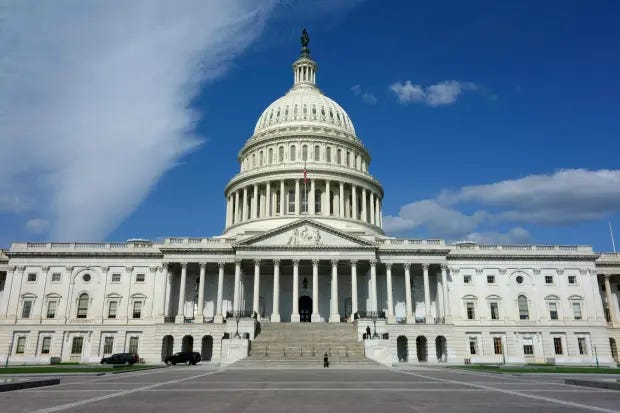Odds of a Government Shutdown
A U.S. government shutdown looks increasingly likely. Here are the answers to investors’ top questions.
The U.S. government is facing the possibility of a federal shutdown, with only seven days remaining before current funding expires on November 17. Expect the usual headlines to the eleventh hour, with risk of a temporary shutdown.
The White House's top budget office has instructed federal agencies to prepare for a potential interruption, and this situation reflects the ongoing political deadlock on Capitol Hill.
Congress update
House Republicans met this week but Speaker Johnson has yet to publicly announce his legislative strategy. The House Freedom Caucus supports a “laddered” continuing resolution (CR) that would have funding run out for different agencies in different weeks in an attempt to force votes on individual spending bills. But that plan does not appear to have broader support in the House or Senate. A “clean” CR would be easiest to pass, but Johnson may attach border funding or other conservative priorities to the funding bill. A “clean” CR would temporarily keep government operations running at the same level as the previous fiscal year. However, if a shutdown ultimately comes to pass, it could mean furloughs for federal employees and disruptions to food or childcare assistance programs.
How long will shutdown last?
I think a shutdown would last 2-3 weeks. If the government shuts down on Nov. 17, a quick reopening looks unlikely as political positions become more deeply entrenched. Instead, political pressure to reopen the government is likely to gradually build.
What would a shutdown mean for economic data releases?
We expect all data releases from federal agencies to be postponed until after the government reopens, except for releases from the Federal Reserve, which does not rely on congressional funding. The absence of appropriations bills for the Department of Labor and the Department of Commerce, among others, could lead to delays in releasing crucial economic reports. This contrasts with the 2018-2019 shutdown when some agencies were unaffected due to prior passage of spending bills.
The potential for a 2-3 week shutdown could complicate the collection of November data, leading to further delays in the release of reports due in December. This could result in limited additional data being available for decision-making at important events, such as the Federal Open Market Committee meeting on December 12-13th.
How could a government shutdown impact the U.S. economy?
A government shutdown may cause only modest losses in gross domestic product (GDP). During the last shutdown, in 2018-2019, an estimated 800,000 federal workers went without pay for over a month. However, GDP fell just $3 billion (equivalent to 0.014% of 2018 GDP) the following quarter, according to the Congressional Budget Office. Looking back, the 20 government shutdowns that have occurred since 1976 appear to have had limited impact on the economy, with inflation-adjusted, or “real,” GDP still growing an average 2.2% during shutdowns.1
While investors may worry about financial and economic uncertainty, it’s key to note that government shutdowns are temporary – on average, they have lasted just over a week. Furthermore, government agencies and staff are made whole for the missed revenue as soon as a federal budget is approved. This relatively short timeline, along with eventual back pay, weakens broader economic impacts.
How can equity investors prepare for a government shutdown?
Historically, government shutdowns have had minimal negative impact on the U.S. stock market, with the S&P 500 Index gaining an average 4.4% during such events, likely due to other macroeconomic factors at play.


